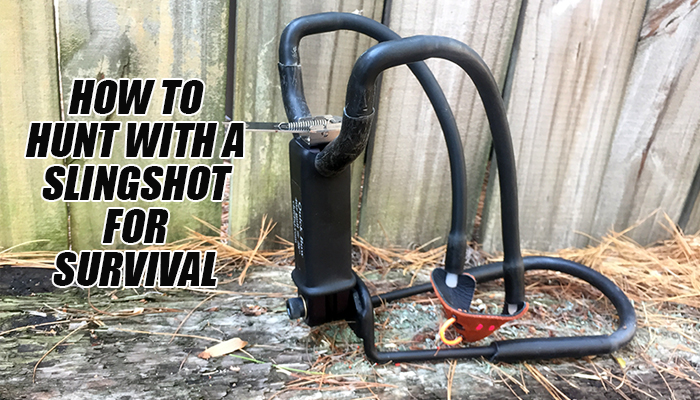
Getting lost or stranded in the middle of the wilderness is a real case scenario for which every outdoor enthusiast should be prepared. Such an event could happen to you when you’re hiking through a new path, mountain biking over a trail, or out camping with your family. And no matter the amount of food you take with you, eventually it is bound to run out. When that happens, living off the land can make the difference between surviving or starving in the woods.
Hunting is one of your best options if you are lost in the wilderness, which is why you should always carry a Slingshot when you go outdoors. Slingshots are small and easy to carry, but they are also powerful hunting weapons that you can use to kill small game like squirrel, rabbits, pheasants, geese, ducks, or even fish (provided that they are near the surface). Carrying a slingshot in your pocket or backpack will give you a reliable hunting weapon that you can use to feed yourself, provided that you know how to use it.
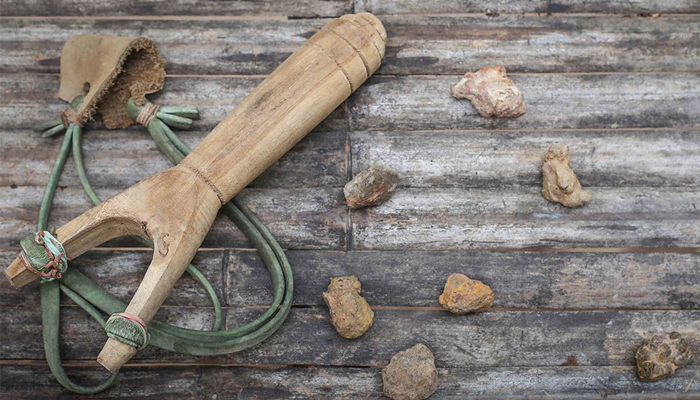
SLINGSHOTS, THE PERFECT SURVIVALIST HUNTING WEAPON
To most civilians, and casual survivalists, a Slingshot is nothing more than a kids’ toy. It takes a real survivalist to recognize the qualities that make Slingshots such a formidable hunting tool. Sure, firearms are superior in range and accuracy, but when it comes to convenience it is much easier for you to take a Slingshot in your pocket, while you’re hiking, rather than carrying a heavy rifle on your shoulder.
Slingshots are also stealthier than even the quietest airgun, which means that you can shoot at an animal without scaring away other potential preys lying nearby. Slingshot hunting rabbit is particularly easy because rabbits tend to have bigger heads than other small game, are easier to spot, and are an easy target everytime they sit quietly and raise their ears to scout the area. Always go for headshots, but even if you miss rabbits are easier to track than smaller animals and being wounded they are unlikely to go too far.
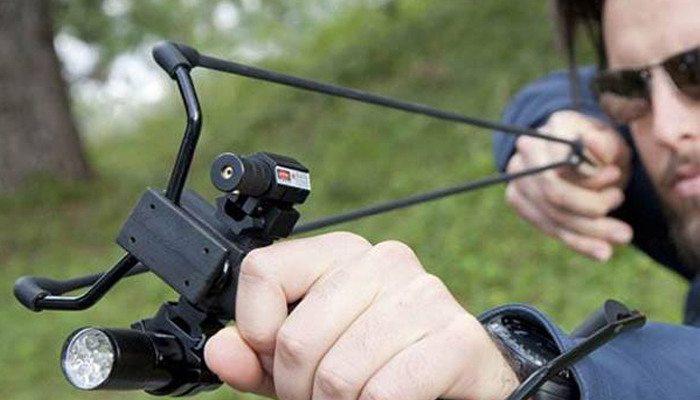
Getting ammunition for your slingshot is really easy and cheap, so much that you can buy it in almost any convenience or hardware store. A lot of people like to use marbles because they are cheap and do the job. Even a cheap slingshot can throw a projectile faster than 150 feet per second, which is enough to fracture a small animal’s skull and kill it instantly. You could even use regular stones, though their highly unpredictable trajectory makes them almost useless as a hunting ammunition. Steel balls make the best ammo and are the most efficient in killing small animals.
A Slingshot’s effective range is small, but this is unlikely to be a problem for you since many small game animals that live on trees, like birds or squirrels, are unlikely to feel threatened by a human standing below their tree. But even at short distances it takes skill to hit a target, so if you don’t want to starve to death in the forest you might want to start practicing now.
HOW TO SHOOT A SLINGSHOT FOR SURVIVAL
The average slingshot that you can find at Walmart can throw a projectile at a speed that is anywhere between 150-300 feet per second. Speed varies widely from one slingshot to other, and even with the ammo you use, but at this speed even small aiming mistakes can throw off your projectile by several meters and with it your chance to get a meal. As with everything else, practice makes perfect.
The targets you’ll be hitting won’t be moving, but they are so small that you should take your time to practice your skills. You should always hold the slingshot’s pouch lightly and hold it lower in the grip. Many beginners hold it too high, or too tightly and end up shooting their ammo everywhere but unto the target.
Accuracy is key when using a slingshot to hunt in a survival situation. Getting a headshot isn’t only a humanitarian concern, if your ammunition actually hits your prey’s body you will cause internal bleeding, and the meat will most probably be ruined. Some animals, like rabbits or squirrels, will even be able to get away, even though the body shot you scored was a deadly one. Stranded in the wilderness without a dog is not the best scenario to be tracking animals
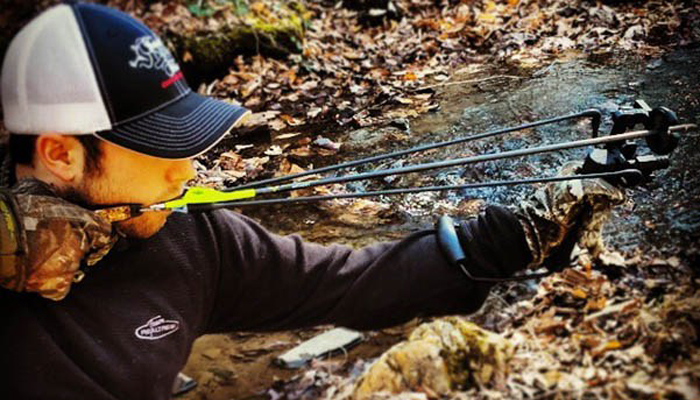
HOW TO HUNT WITH A SLINGSHOT
Small animals are fast and agile, so getting them while they’re on the run is highly unlikely. So don’t waste your ammo. Wait until they stopped to rest or scout the area and have your slingshot at hand. Opportunities can disappear just as quickly as they present themselves. Your best chance to get some food is if you manage to find the hole or nest where your prey lives. Underground burrows, like those used by rabbits, can be hard to find, but birds and squirrels are easier to spot on the trees. Most bird species use some type of call to communicate with each other which makes it easier to know where they’re at.
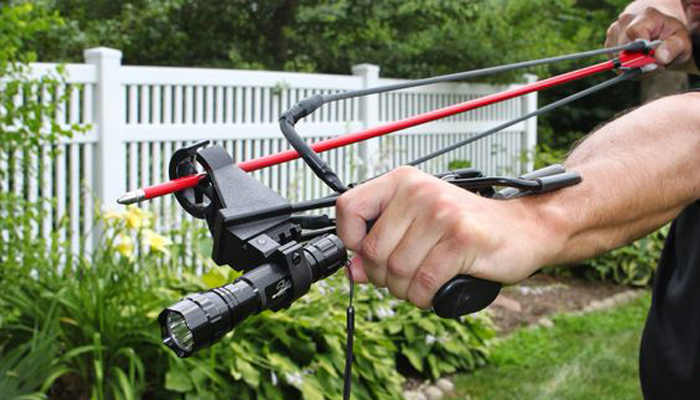
(Via: http://mensgear.net/)
Rabbits are some of the biggest animals you can kill with a slingshot. If you can catch them while they’re lying still and scouting the noises in the area, then you have a good chance to hit one. Make sure to use steel ammo because this will increase your chances of successfully hitting and killing a rabbit. A well placed headshot will kill the animal instantly and give you plenty of much needed protein and energy for several days.
Squirrels are easy to find in many forests, and sometimes you might catch them descending from a tree, which is the perfect opportunity to kill one. Even if you miss its head you might be able to hit it in the spine, and if not kill it at least stop it from running. But beware of hitting the body. Squirrels have tough skin so even if your ammo wont tear it, it will waste the meat inside.
Birds are also a great target, and if you are near a lake or a quiet river you can probably find ducks. A single one of these animals can easily feed you for 5 days, so if you are lucky enough to find a flock of ducks don’t waste the opportunity. Take your slingshot, aim and fire away.
Author Bio:
 Kevin Steffey is an avid hunter and freelance writer. He loves spending time in the field with his rifle more than almost anything else, and occupies his off-time discussing deer and their habits online. He is a founder at www.deerhuntingfield.com
Kevin Steffey is an avid hunter and freelance writer. He loves spending time in the field with his rifle more than almost anything else, and occupies his off-time discussing deer and their habits online. He is a founder at www.deerhuntingfield.com